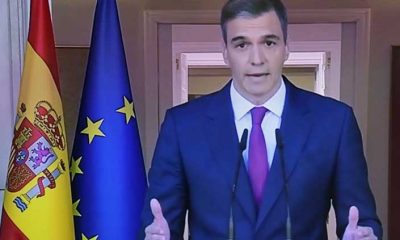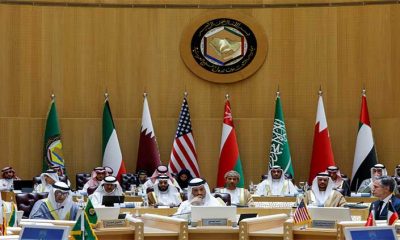JPMorgan Chase (JPM.N), opens new tab CEO Jamie Dimon hailed US leadership and economic power in an annual letter to shareholders on Monday that invoked “liberty and justice for all.”
Dimon, who runs the largest US bank, celebrated American exceptionalism in his yearly message, which is widely read by investors. In it, he underscored the importance of the nation’s military might — and its support for Ukraine — alongside its economic strength. Public policy recommendations accounted for about a quarter of the document, a larger share than last year.
“Even America, the most prosperous nation on the planet with its vast resources, needs to focus its resources on the complex and difficult tasks ahead,” he wrote.
Dimon, who took the reins in 2006, is among a group of financial CEOs whose names have been floated for senior economic roles in government. The Wall Street Journal, opens new tab last week reported that allies of former US President Donald Trump was considering senior Wall Street executives, including Dimon, for the role of Treasury secretary.
JPMorgan declined to comment on the speculation, and has previously said that Dimon has no plans to run for office.
In the domestic arena, Dimon cited a widening wage gap that has led to “the fraying of the American dream,” and caused some Americans to feel left behind while others become more wealthy. He recommended improving education and increasing tax credits for low-income workers.
The billionaire CEO was awarded a 4% raise to $36 million for 2023 after JPMorgan earned a record annual profit.
That’s the hope of researchers who are wiring up coffee plants with solar powered sensors.
On foreign policy, Dimon advocated for the US to sign more trade agreements and said it should take a tough stance with China, while still staying engaged.
The CEO’s letter also includes a reprinted column written by former US Senator George McGovern in 1992, a leading Democratic liberal whose anti-Vietnam War stance cost him the 1972 presidential race against Republican Richard Nixon.
The article, entitled “A Politician’s Dream Is a Businessman’s Nightmare,” discusses the challenges of running a small business and the role of government in encouraging economic growth.
Elsewhere, Dimon reiterated his opposition to stricter bank capital rules proposed by US regulators. The draft regulations could make markets less transparent and hurt consumers by making loans more expensive, Dimon wrote. He also called for simpler rules and better collaboration between banks and regulators.
Federal Reserve Chairman Jerome Powell said last month that regulators will make significant changes to the contentious plan.
Dimon also advocated for more merger approvals at a time when lenders are facing increased competition from fintech firms and private credit companies.
“Banks should be allowed to pursue their individual strategies, including mergers and acquisitions, as they see fit,” Dimon said.
Banking consolidation has come into focus after three regional lenders failed last year, spreading turmoil through the industry. JPMorgan bought one of the collapsed banks, First Republic, last year.
Separately, Dimon maintained his view that inflation could be more persistent than markets expect, prompting interest rates to stay higher.
“In spite of the unsettling landscape, including last year’s regional bank turmoil, the U.S. economy continues to be resilient, with consumers still spending, and the markets currently expect a soft landing,” he wrote.
Post Views: 26


 Sports3 months ago
Sports3 months ago
 Sports3 months ago
Sports3 months ago
 Fashion2 months ago
Fashion2 months ago
 pakistan3 months ago
pakistan3 months ago
 pakistan3 months ago
pakistan3 months ago
 World2 months ago
World2 months ago
 Sports2 months ago
Sports2 months ago
 World2 months ago
World2 months ago



















